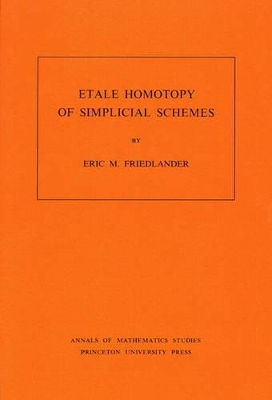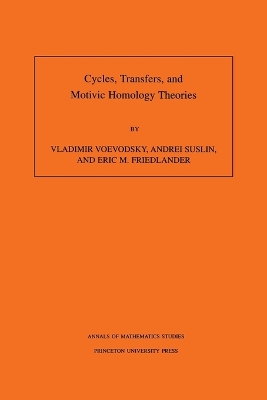Annals of Mathematics Studies
2 primary works • 4 total works
Book 104
Book 143
Cycles, Transfers, and Motivic Homology Theories. (Am-143)
by Vladimir Voevodsky, Andrei Suslin, and Eric M. Friedlander
Published 15 October 2008
Etale Homotopy of Simplicial Schemes. (AM-104), Volume 104
by Eric M. Friedlander
Published 21 December 1982
This book presents a coherent account of the current status of etale homotopy theory, a topological theory introduced into abstract algebraic geometry by M. Artin and B. Mazur. Eric M. Friedlander presents many of his own applications of this theory to algebraic topology, finite Chevalley groups, and algebraic geometry. Of particular interest are the discussions concerning the Adams Conjecture, K-theories of finite fields, and Poincare duality. Because these applications have required repeated modifications of the original formulation of etale homotopy theory, the author provides a new treatment of the foundations which is more general and more precise than previous versions. One purpose of this book is to offer the basic techniques and results of etale homotopy theory to topologists and algebraic geometers who may then apply the theory in their own work. With a view to such future applications, the author has introduced a number of new constructions (function complexes, relative homology and cohomology, generalized cohomology) which have immediately proved applicable to algebraic K-theory.
Cycles, Transfers, and Motivic Homology Theories. (AM-143), Volume 143
by Vladimir Voevodsky, Andrei Suslin, and Eric M. Friedlander
Published 24 April 2000
The original goal that ultimately led to this volume was the construction of "motivic cohomology theory," whose existence was conjectured by A. Beilinson and S. Lichtenbaum. This is achieved in the book's fourth paper, using results of the other papers whose additional role is to contribute to our understanding of various properties of algebraic cycles. The material presented provides the foundations for the recent proof of the celebrated "Milnor Conjecture" by Vladimir Voevodsky. The theory of sheaves of relative cycles is developed in the first paper of this volume. The theory of presheaves with transfers and more specifically homotopy invariant presheaves with transfers is the main theme of the second paper. The Friedlander-Lawson moving lemma for families of algebraic cycles appears in the third paper in which a bivariant theory called bivariant cycle cohomology is constructed. The fifth and last paper in the volume gives a proof of the fact that bivariant cycle cohomology groups are canonically isomorphic (in appropriate cases) to Bloch's higher Chow groups, thereby providing a link between the authors' theory and Bloch's original approach to motivic (co-)homology.



